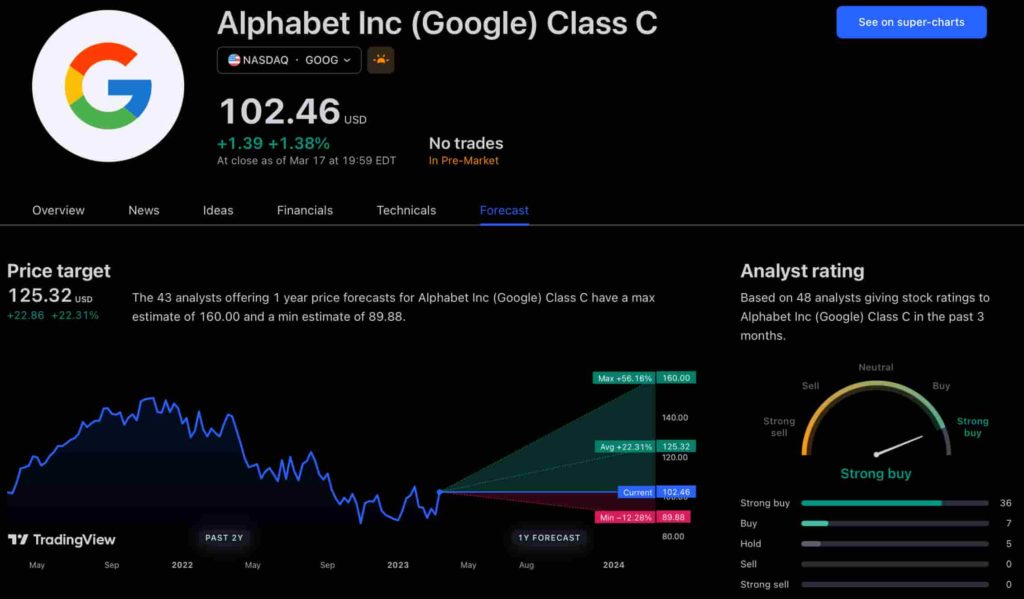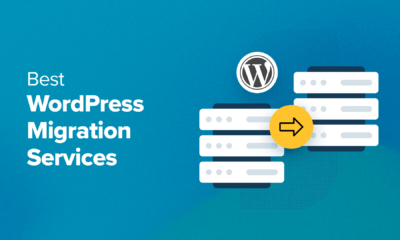The new app is called watchGPT and as I tipped off already, it gives you access to ChatGPT from your Apple Watch. Now the $10,000 question (or more accurately the $3.99 question, as that is the one-time cost of the app) is why having ChatGPT on your wrist is remotely necessary, so let’s dive into what exactly the app can do.
NEWS
WordPress 5.7 Will Feature Updated Admin Colors via @martinibuster
WordPress announced a WordPress 5.7 milestone in updating the admin color palette. The new palette produces higher contrast and is easier to read. It represents a step forward in making the WordPress admin backend more accessible.
WordPress 5.7
The newest version of WordPress (version 5.7) is scheduled to be released on March 9, 2021. One of the goals for version 5.7 of WordPress was to update the admin color palette. The color palette are the official colors available for anything that is in the WordPress admin area.
There has not been an update of the color scheme, currently consisting of 199 colors, since the current palette was created.
This update will affect everything that is seen within the admin panel, including plugin and theme notifications that are seen within the admin area of WordPress.
Advertisement
Continue Reading Below
Accessibility and Simplification of Admin Area
The two goals for updating the color palette was to simplify the process of choosing colors for developers as well as to make the admin area more accessible.
This new version has a higher contrast between light and dark colors, which should make it easier to read the admin area for publishers who are color blind.
This update affects all users. The difference between the old version and the new version makes it easier for all users who have access to the WordPress backend.
WordPress managed to reduce the number of colors in the current color scheme from 199 colors to only 99.
Easier to Read Admin Area
The difference in contrast and readability between the old version and the new version is subtle, as it should be.
Advertisement
Continue Reading Below
Many people may not notice it even though they might find the admin area a more pleasant experience without knowing why.
The change is not immediately apparent but a side by side comparison does reveal that there is indeed a difference.


Progress Continues on WordPress 5.7
There is still more work to be done between now and the March release of WordPress 5.7. They still have to create a color palette using CSS custom properties and a naming scheme that makes sense.
According to WordPress.org:
“So far the general approach to this, that has generated the most discussion and agreement, is to create a base colour palette and then apply those colours to properties named after their usage.
This would give us the flexibility to utilise the dynamic nature of CSS custom properties to change the value of properties based on certain criteria, and without the danger of the name becoming misleading or incorrect.
The other big consideration is that there are a number of alternative admin colour schemes already available, all of which should be able to take advantage of the use of custom properties once implemented.
Therefore we need to keep the number of custom properties created concise and how we implement them needs to easily extendable.
As well as this we do also need to consider fallbacks for browsers that do not support CSS Custom Properties and this could impact how we name or implement them.”
Advertisement
Continue Reading Below
WordPress.org Deserves Acknowledgement
Some organizations believe it’s best to get a job done regardless of whether it is ready or not. That’s why some software and platforms are introduced to users in a buggy state.
But that’s not how WordPress.org works. As can be seen with the rethink of the admin color palette, the WordPress team discusses and works on each part with the goal of creating something that works when delivered.
The Make WordPress development team has made great progress so far. There are good things coming in the next version of WordPress, 5.7.
Citations
Read the Official Announcement:
Introducing CSS Custom Properties to the WordPress Admin
Check out the interactive before and after sliders:
Admin Color Branch Comparison
Advertisement
Continue Reading Below
Inspect the Full Color Palette:
WordPress Color Palette
Facebook Faces Yet Another Outage: Platform Encounters Technical Issues Again

Uppdated: It seems that today’s issues with Facebook haven’t affected as many users as the last time. A smaller group of people appears to be impacted this time around, which is a relief compared to the larger incident before. Nevertheless, it’s still frustrating for those affected, and hopefully, the issues will be resolved soon by the Facebook team.
Facebook had another problem today (March 20, 2024). According to Downdetector, a website that shows when other websites are not working, many people had trouble using Facebook.
This isn’t the first time Facebook has had issues. Just a little while ago, there was another problem that stopped people from using the site. Today, when people tried to use Facebook, it didn’t work like it should. People couldn’t see their friends’ posts, and sometimes the website wouldn’t even load.
Downdetector, which watches out for problems on websites, showed that lots of people were having trouble with Facebook. People from all over the world said they couldn’t use the site, and they were not happy about it.
When websites like Facebook have problems, it affects a lot of people. It’s not just about not being able to see posts or chat with friends. It can also impact businesses that use Facebook to reach customers.
Since Facebook owns Messenger and Instagram, the problems with Facebook also meant that people had trouble using these apps. It made the situation even more frustrating for many users, who rely on these apps to stay connected with others.
During this recent problem, one thing is obvious: the internet is always changing, and even big websites like Facebook can have problems. While people wait for Facebook to fix the issue, it shows us how easily things online can go wrong. It’s a good reminder that we should have backup plans for staying connected online, just in case something like this happens again.
NEWS
We asked ChatGPT what will be Google (GOOG) stock price for 2030

Investors who have invested in Alphabet Inc. (NASDAQ: GOOG) stock have reaped significant benefits from the company’s robust financial performance over the last five years. Google’s dominance in the online advertising market has been a key driver of the company’s consistent revenue growth and impressive profit margins.
In addition, Google has expanded its operations into related fields such as cloud computing and artificial intelligence. These areas show great promise as future growth drivers, making them increasingly attractive to investors. Notably, Alphabet’s stock price has been rising due to investor interest in the company’s recent initiatives in the fast-developing field of artificial intelligence (AI), adding generative AI features to Gmail and Google Docs.
However, when it comes to predicting the future pricing of a corporation like Google, there are many factors to consider. With this in mind, Finbold turned to the artificial intelligence tool ChatGPT to suggest a likely pricing range for GOOG stock by 2030. Although the tool was unable to give a definitive price range, it did note the following:
“Over the long term, Google has a track record of strong financial performance and has shown an ability to adapt to changing market conditions. As such, it’s reasonable to expect that Google’s stock price may continue to appreciate over time.”
GOOG stock price prediction
While attempting to estimate the price range of future transactions, it is essential to consider a variety of measures in addition to the AI chat tool, which includes deep learning algorithms and stock market experts.
Finbold collected forecasts provided by CoinPriceForecast, a finance prediction tool that utilizes machine self-learning technology, to anticipate Google stock price by the end of 2030 to compare with ChatGPT’s projection.
According to the most recent long-term estimate, which Finbold obtained on March 20, the price of Google will rise beyond $200 in 2030 and touch $247 by the end of the year, which would indicate a 141% gain from today to the end of the year.
Google has been assigned a recommendation of ‘strong buy’ by the majority of analysts working on Wall Street for a more near-term time frame. Significantly, 36 analysts of the 48 have recommended a “strong buy,” while seven people have advocated a “buy.” The remaining five analysts had given a ‘hold’ rating.

The average price projection for Alphabet stock over the last three months has been $125.32; this objective represents a 22.31% upside from its current price. It’s interesting to note that the maximum price forecast for the next year is $160, representing a gain of 56.16% from the stock’s current price of $102.46.
While the outlook for Google stock may be positive, it’s important to keep in mind that some potential challenges and risks could impact its performance, including competition from ChatGPT itself, which could affect Google’s price.
Disclaimer: The content on this site should not be considered investment advice. Investing is speculative. When investing, your capital is at risk.
NEWS
This Apple Watch app brings ChatGPT to your wrist — here’s why you want it

ChatGPT feels like it is everywhere at the moment; the AI-powered tool is rapidly starting to feel like internet connected home devices where you are left wondering if your flower pot really needed Bluetooth. However, after hearing about a new Apple Watch app that brings ChatGPT to your favorite wrist computer, I’m actually convinced this one is worth checking out.
-

 PPC6 days ago
PPC6 days agoHow 6 SEO Experts Are Navigating Google Update Chaos
-

 SEARCHENGINES6 days ago
SEARCHENGINES6 days agoBing Search Testing Removing Cache Link From Search Results
-

 WORDPRESS4 days ago
WORDPRESS4 days ago10 WordPress Influencers to Follow in 2024 – WordPress.com News
-

 MARKETING5 days ago
MARKETING5 days ago60 Remote Work Stats to Know in 2024
-

 SEO7 days ago
SEO7 days agoThe Essential Guide To Using Images Legally Online
-

 MARKETING4 days ago
MARKETING4 days agoFeeling Stuck: What to Do When You Don’t Know What to Do
-

 SEARCHENGINES7 days ago
SEARCHENGINES7 days agoOngoing Google March Core Update, Googlebot To Crawl Less, Pay For Google Search AI & More
-

 SEO6 days ago
SEO6 days agoGoogle Explains How It Chooses Canonical Webpages











